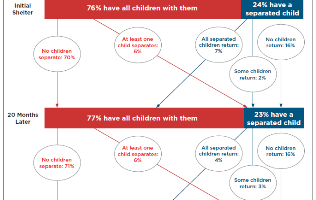One-third of children in families who experienced homelessness were separated from their family during their initial stay in shelter or at some time in the past.
This is one of the key findings from a new research brief published by the U.S. Department of Health and Human Services Office of Planning, Research, and Evaluation, Child Separation among Families Experiencing Homelessness. The brief uses data gathered through the Family Options Study, which looks at the experience of more than 2,000 families with children who used shelters between 2010 and 2012. The Family Options Study used this data to assess the effectiveness of various housing and services interventions for these families, but we can conduct additional analysis to gain insights into other areas.

Findings from the brief reveal extensive and persistent levels of child separation among these families:
- The median duration of the separation was 18 months, although one-third of children were separated from the family for 3 years or more.
- Most children who were separated from their families stayed with the other parent or other relatives; about 3 percent were in formal foster care placements and 11 percent were living in some other situation, such as an adoption placement or with godparents.
- In the three years following a shelter stay, the overall rate of separation remained fairly constant but families experienced substantial ongoing churning, with both separations and reunifications occurring throughout that period. Click on the thumbnail image to view a chart from the report that illustrates these patterns.
- Children with prior separations were more likely to become separated from their families again in the three years after a shelter stay.
Findings in the brief indicate a relationship between housing instability and child separations, suggesting that assistance that enables families to maintain stable housing may also play a role in keeping families together.
Read the full brief on the OPRE website.
June 2018
